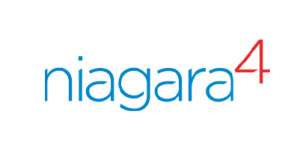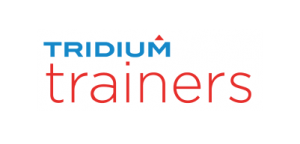
Building Automation Fundamentals

Course Description
We have partnered with Smart Buildings Academy to make this awesome course available in APAC region with local support and attractive pricing models.
Building Automation Fundamentals takes the student through a complete look at BAS components, processes, and use scenarios. The purpose is to provide a foundational set of knowledge upon which the student can build their career.
Building automation can feel pretty overwhelming, especially when you’re new to the industry and need to learn everything from scratch. Developing a solid foundation of building automation fundamentals will make you feel much more confident in your BAS career, whether you are in sales, operations, or construction.
![]() Fully online, self-paced course
Fully online, self-paced course
![]() Overall course length is 10 hours and 45 minutes
Overall course length is 10 hours and 45 minutes
![]() Discussion forum and online meetings available to discuss course material
Discussion forum and online meetings available to discuss course material
![]() Access to all course material for one full year
Access to all course material for one full year


Objectives
At the completion of the course, the student will demonstrate a general level of knowledge and understanding of building automation. This knowledge level will be evaluated via a series of discussion forums, knowledge checks, and a final exam.
Key knowledge areas are:
![]() Identify and explain the purpose of the key four layers of a building automation architecture and their function
Identify and explain the purpose of the key four layers of a building automation architecture and their function
![]() Identify the required control modes for specific control sequences
Identify the required control modes for specific control sequences
![]() Describe the individual stages of a building automation project and your role in it
Describe the individual stages of a building automation project and your role in it
![]() Explain the different control devices and their purpose
Explain the different control devices and their purpose

Key Topics
This course will focus on providing the foundational knowledge that a BAS professional needs in order to succeed in the first two years of their BAS career. This course will cover BAS components, processes, and technologies.
![]() Gain a complete overview of building automation systems
Gain a complete overview of building automation systems
![]() Learn the five different pieces of BAS hardware and how each piece functions within a full-blown BAS
Learn the five different pieces of BAS hardware and how each piece functions within a full-blown BAS
![]() Learn the three different BAS architectures, the pros and cons of each architecture, and how to use each architecture
Learn the three different BAS architectures, the pros and cons of each architecture, and how to use each architecture
![]() Learn what points, trends, and alarms are, how and when to use them and point naming strategies for your BAS
Learn what points, trends, and alarms are, how and when to use them and point naming strategies for your BAS
![]() Learn what a user interface is, how to properly structure graphics, why and how to use BAS reporting, and how to create an optimized scheduling strategy
Learn what a user interface is, how to properly structure graphics, why and how to use BAS reporting, and how to create an optimized scheduling strategy
![]() Learn the three different BAS architectures, the pros and cons of each architecture, and how to use each architecture
Learn the three different BAS architectures, the pros and cons of each architecture, and how to use each architecture
![]() Learn what control systems are, why control systems matter, the four different kinds of control systems, and how to tie each control system type into your BAS
Learn what control systems are, why control systems matter, the four different kinds of control systems, and how to tie each control system type into your BAS
![]() Learn what control modes are, how the 7 common control modes work, when to use each control mode, and how to adjust each control mode
Learn what control modes are, how the 7 common control modes work, when to use each control mode, and how to adjust each control mode
![]() Learn what a protocol is, how the 3 most common protocols work, when to use each protocol, and how to use each protocol
Learn what a protocol is, how the 3 most common protocols work, when to use each protocol, and how to use each protocol
![]() Learn what the three types of controls work are, how each type of controls work is done, what your role in each type of controls work is
Learn what the three types of controls work are, how each type of controls work is done, what your role in each type of controls work is
![]() Learn the fundamentals of electricity, how wiring works and the different parts of wiring, what a circuit is, and how relays and safeties work in a circuit
Learn the fundamentals of electricity, how wiring works and the different parts of wiring, what a circuit is, and how relays and safeties work in a circuit
![]() Learn the key pieces and parts of an IT system and how each part relates to a BAS
Learn the key pieces and parts of an IT system and how each part relates to a BAS
![]() Learn what the main construction documents are, how to use the documents as a BAS professionals, and how to interpret and use BAS controls documents
Learn what the main construction documents are, how to use the documents as a BAS professionals, and how to interpret and use BAS controls documents
![]() Learn what test and balance is, how the BAS professionals is involved in the T&B process, what commissioning is, and how to create and perform functional tests
Learn what test and balance is, how the BAS professionals is involved in the T&B process, what commissioning is, and how to create and perform functional tests
![]() Learn the basics of systems integration, what the three types of integration are, and when to perform each type of integration
Learn the basics of systems integration, what the three types of integration are, and when to perform each type of integration

Audience
This course is targeted towards new salespersons, technicians, designers, operators, consulting engineers, and project managers. This course provides the foundational knowledge for all of our other courses.
Pre-requisite knowledge
No pre-requisite knowledge is required.
Additional Materials Required: NONE

Successful completion will require
![]() Downloading the Course Guided Notes
Downloading the Course Guided Notes
![]() Viewing all lesson videos in their entirety
Viewing all lesson videos in their entirety
![]() Completing and passing Knowledge Checks with a score of 70% or better
Completing and passing Knowledge Checks with a score of 70% or better
![]() Completing and passing the Final Exam with a score of 70% or better
Completing and passing the Final Exam with a score of 70% or better
![]() Completing the Student Course Exit Evaluation
Completing the Student Course Exit Evaluation
Upon successful completion you will
Receive a Certificate of Completion and your name will be added to the certification database.

BOOK NOW
Click here to register for this course or get in touch with us to discuss further. We can also offer skill assessments for staff members or potential new hires.





